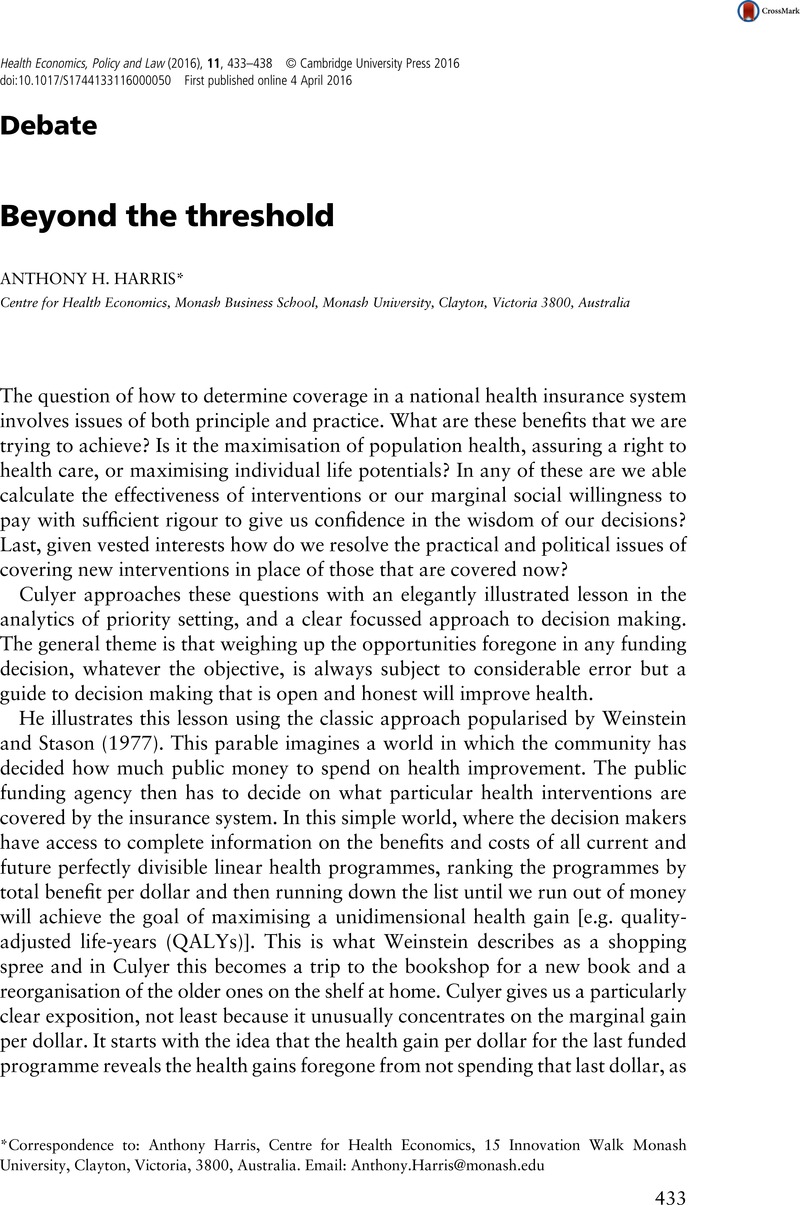Crossref Citations
This article has been cited by the following publications. This list is generated based on data provided by Crossref.
Lomas, James
Claxton, Karl
Martin, Stephen
and
Soares, Marta
2018.
Resolving the “Cost-Effective but Unaffordable” Paradox: Estimating the Health Opportunity Costs of Nonmarginal Budget Impacts.
Value in Health,
Vol. 21,
Issue. 3,
p.
266.
Lomas, James R.S.
2019.
Incorporating Affordability Concerns Within Cost-Effectiveness Analysis for Health Technology Assessment.
Value in Health,
Vol. 22,
Issue. 8,
p.
898.
Howdon, Daniel D.H.
Lomas, James R.S.
and
Paulden, Mike
2019.
Implications of Nonmarginal Budgetary Impacts in Health Technology Assessment: A Conceptual Model.
Value in Health,
Vol. 22,
Issue. 8,
p.
891.




